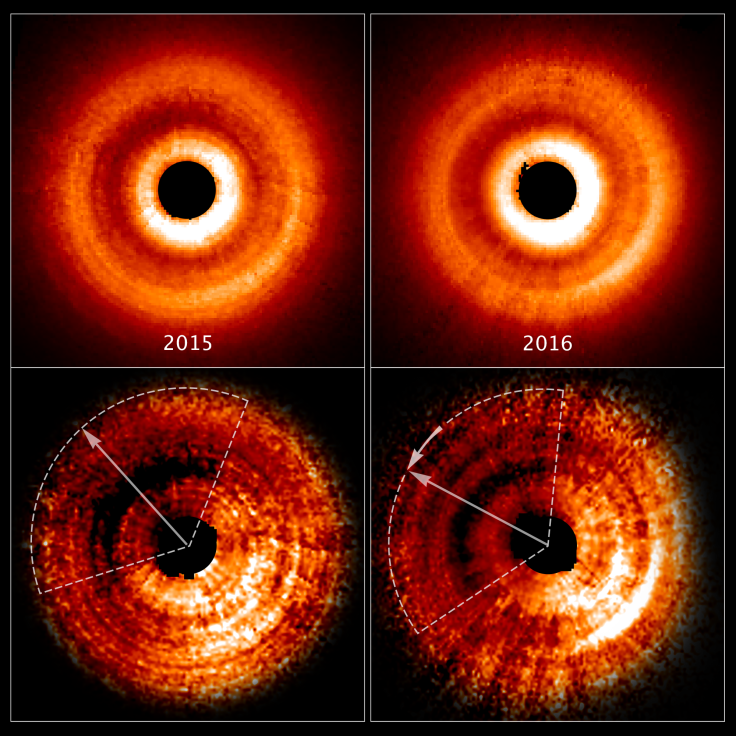Hubble Space Telescope Detects Shadow In A Young Star’s Circumstellar Disk Possibly Caused By Orbiting Planet

Last April, a team of astronomers using the Atacama Large Millimeter/submillimeter Array (ALMA) in Chile said they had spotted an infant exoplanet orbiting a nearby Sun-like star located in the stellar system TW Hydrae located over 190 light-years from Earth. Now, astronomers perusing 18 years’ worth of archival data gathered by the Hubble Space Telescope have unearthed further evidence that there is, in fact, a planet present in the debris disk around the young star.
The observations, made using Hubble’s imaging spectrograph and the Near Infrared Camera and Multi-Object Spectrometer (NICMOS), revealed a shadow sweeping across the circumstellar disk. This shadow across the surface of the outer disk, the researchers said, is being cast by gravitationally pulled material in the inner part of the disk.
And what’s exerting this gravitational pull? Most likely a planet located deep within the 41-billion-mile-wide disk — one that is twisting the inner disk and is located so close to the parent star that it cannot be directly imaged by the any present-day telescope.
“This is the very first disk where we have so many images over such a long period of time, therefore allowing us to see this interesting effect,” lead researcher John Debes from the Space Telescope Science Institute in Baltimore, Maryland, said in a statement. “That gives us hope that this shadow phenomenon may be fairly common in young stellar systems.”
The researchers first observed this shadow in 2005, but could not determine its cause because of lack of sufficient data. At the time, it was believed to be a feature that was part of the disk. Years later, when poring over the data gathered between 2000 and 2016, they found that the feature was moving too fast to be physically part of the disk.
“The fact that I saw the same motion over 10 billion miles from the star was pretty significant, and told me that I was seeing something that was imprinted on the outer disk rather than something that was happening directly in the disk itself,” Debes said. “The best explanation is that the feature is a shadow moving across the surface of the disk.”
Scientists hope that by studying the protoplanetary disk around TW Hydrae, they would be able to understand exactly how planets form — a process whose exact mechanism is still shrouded in mystery.
“What is surprising is that we can learn something about an unseen part of the disk by studying the disk's outer region and by measuring the motion, location, and behavior of a shadow,” Debes said. “This study shows us that even these large disks, whose inner regions are unobservable, are still dynamic, or changing in detectable ways which we didn't imagine.”
© Copyright IBTimes 2024. All rights reserved.






















